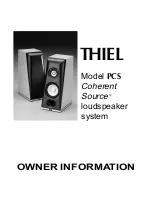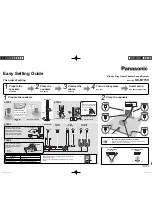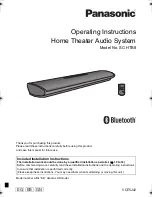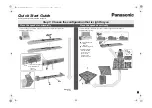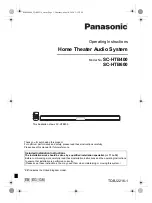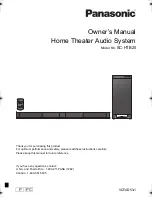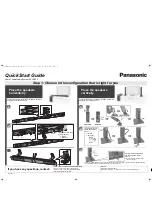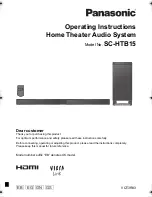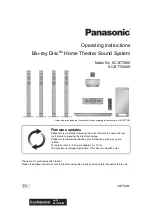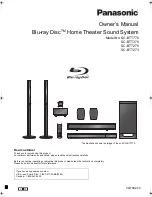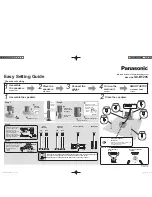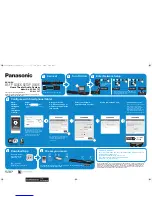
CONNECTING THE SPEAKERS
The PCS’s input terminals are located on the back of the speaker. The PCS uses a 5-way binding post which accepts several
types of speaker cable termination. Make sure that all connections are tight.
It is essential for proper performance that both speakers in a stereo system be wired in the same polarity. The speaker’s input
terminals are color coded to facilitate this. The wire connected to the red ringed input terminal of each speaker should connect
to the respective positive (+) output terminals of the amplifier; the wire connected to the black ringed input terminals should be
connected to the respective negative (–) output terminals of the amplifier.
The speakers should be connected to the amplifier with high quality cable to ensure minimal loss of power and proper control
by the amplifier. If the speakers are being connected to a vacuum tube amplifier with various impedance taps, the 4 ohm tap will
usually give the best results.
Due to European CE regulations that do not permit banana plug type loudspeaker connections, we ship THIEL speakers with
removable plugs installed in the ends of the binding posts. If you wish to use banana plug type connections, you may remove the
black plastic plug inserted into the end of each metal binding post cap. To remove the plug, use your fingernail to pry along the
bottom edge of the plastic insert and lift out.
BREAK-IN
The PCSs, like most speakers, require a period of playing before they perform optimally. The time depends on how loudly
the speakers are played; more time is required if played softly, less if played loudly. At least 50 hours at moderately loud
levels are required before the speaker is performing near optimum. You should notice even more improvement after 100
hours of playing.
ASSOCIATED EQUIPMENT
The PCS is a very high quality sound reproducer and will benefit from use with the best associated equipment. Since it is
extremely accurate, it will reveal sources of distortion generated elsewhere in the system. For example, distortion resulting
from poor recordings or inferior electronics will be reproduced accurately. Also, the quality of the interconnect cables and
speaker cables will significantly effect the performance of the system.
POWER REQUIREMENTS
It is important to have enough power to play at the level you desire without distortion. If high sound levels are desired, the
PCS’s are designed to be used with amplifiers rated up to 300 watts per channel (into 4 ohms). If you play the speakers more
loudly than the volume the amplifier can cleanly produce, the amplifier will produce overload (clipping) distortion. The
sound will become compressed, strained, and in extreme cases, obviously distorted. This distortion is actually non-musical
additional energy and since it is concentrated in the high frequency region where the speaker is least able to handle it,
tweeters can be damaged in extreme cases.
Keep in mind that sound quality is usually much more important than sound quantity. There can be large differences in the
sonic performance of two amplifiers of equal power, and this is more important than large differences in power. Most
everyone will be happier with a 100 watt amplifier of high sonic quality than a 200 watt amplifier of mediocre sonic quality.
For this reason, we feel there is no substitute for listening in making your amplifier decision.
The question “how much power do I need?” does not have the simple answer most people expect because it is not
determined only by the loudspeaker’s efficiency, but also by the volume desired and the size of the room. If all three factors
are average, about 100 watts per channel is required. Each factor can raise or lower this amount by about three times.
1) Usually, people who “don’t like music loud” can decrease their power to about one-half. Also, people who like music
loud should increase their power by 2 times or more. Most people fall within a normal range.
2) A speaker with a low efficiency of 84dB/W-m will require twice the power of an average 87dB/W-m speaker and one
with a high rating of 90dB/W-m will require only half the power of an average speaker. Usually, high efficiency can be
obtained only by trading off sonic quality—there are very few speakers that provide a very high level of both. The PCS is of

